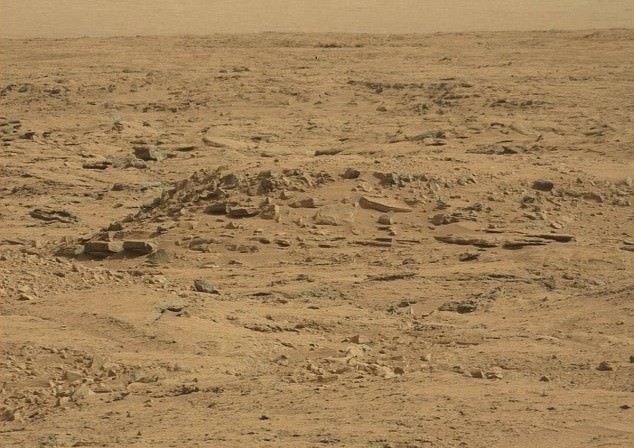Remember a few weeks ago when the weather on Mars was making the news? At the time, parts of the Red Planet was experiencing temperatures that were actually warmer than parts of the US. Naturally, there were quite a few skeptics. How could a planet with barely any atmosphere which is farther from the Sun actually be warmer than Earth?
Well, according to recent data obtained by the Curiosity rover, temperatures in the Gale Crater reached a daytime high of -8 °C (17.6 °F) while cities like Chicago and Buffalo were experiencing lows of -16 to -20 °C (2 to -4 °F). As it turns out, this is due to a number of interesting quirks that allow for significant temperature variability on Mars, which at times allow some regions to get warmer than places here on Earth.
It’s no secret that this past winter, we here in North America have been experiencing a bit of a record-breaking cold front. This was due to surges of cold air pushing in from Siberia and the North Pole into Canada, the Northern Plains and the Midwest. This resulted in many cities experiencing January-like weather conditions in November, and several cities hitting record-lows not seen in decades or longer.

For instance, the morning of November 18th, 2014, was the coldest since 1976, with a national average temperature of -7 °C (19.4 °F). That same day, Detroit tied a record it had set in 1880, with a record low of -12 °C (11 °F).
Five days earlier, the city of Denver, Colorado experienced temperatures as cold as -26 °C (-14 °F) while the city of Casper, Wyoming, hit a record low of -33 °C (-27 °F). And then on November 20th, the town of Jacksonville, Florida broke a previous record (which it set in 1873) with an uncharacteristic low of -4° C (25 °F).
Hard to believe isn’t it? Were it not for the constant need for bottled oxygen, more people might consider volunteering for Mars One‘s colonizing mission – which, btw, is still scheduled to depart in 2023, so there’s still plenty of time register! However, these comparative figures manage to conceal a few interesting facts about Mars.
For starters, Mars experiences an average surface temperature of about -55 °C (-67 °F), with temperatures at the pole reaching as low as a frigid -153 °C (-243.4 °F). Meanwhile, here on Earth the average surface temperature is 7.2 °C (45 °F), which is also due to a great deal of seasonal and geographic variability.

In the desert regions near the equator, temperature can get as high as 57.7 °C, with the hottest temperature ever recorded being 70.7 °C (158.36 °F) in the summertime in the desert region of Iran. At the south pole in Antarctica temperatures can reach as low as -89.2 °C (-128.6 °F). Pretty darn cold, but still balmy compared to Mars’ polar ice caps!
Also, since its arrival in 2012, the Curiosity Rover has been rolling around inside Gale Crater – which is located near the planet’s equator. Here, the planet’s temperature experiences the most variability, and can reach as high as 20 °C (68 °F) during midday.
And last, but not least, Mars has a greater eccentricity than all other planet’s in the Solar System – save for Mercury. This means that when the planet is at perihelion (closest to the Sun) it is roughly 0.28 AUs (42.5 million km) closer than when it is at aphelion (farthest from the Sun). Having just passed perihelion recently, the average surface temperatures on Mars can vary by up to an additional 20 ºC.
In short, Mars is still, and by far, the colder of the two planets. Not that it’s a competition or anything…
Further Reading: NASA


Just thought I would point out a calculation error. Mars’ semimajor axis is only about 1.5 AU. The difference between aphelion and perihelion is 0.28 AU, not 2.8 AU. Still, assuming radiative equilibrium, I make out the temperature difference to be about 12 K, not far from your 20 K.
Yes, I seem to misplaced the decimal. However, the 20 K is not a calculation of my own, but is derived from data obtained by the Viking, Mariner and NRAO probes that showed that at perihelion, increased sunlight leads to dust storms that increase the temperature by an overall 30-50 F (12 – 28C) planetwide.